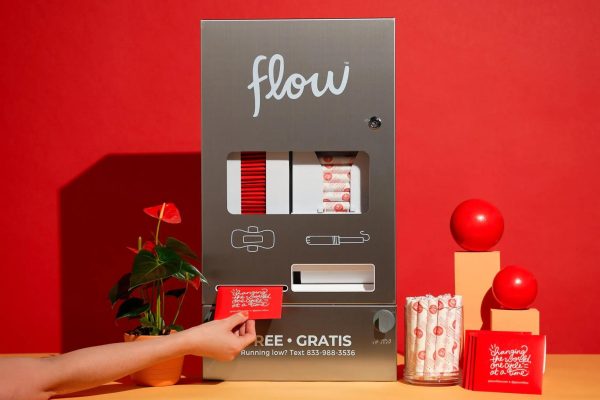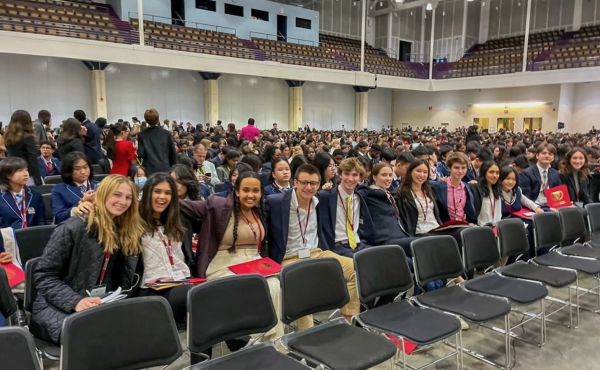Norton Digs Deep into French Archaeology
Will (second row far left) poses with the team at the dig.
What, one might wonder, did Will Norton ’17 learn by spending a month living under a rock?
Norton worked as part of an archaeological excavation in Arago Cave, a dig site in southern France. Excavation of the cave began in 1964 under the direction of famed French archaeologist Henry de Lumley, and continues every summer to this day. However, the discovery of human remains at Arago Cave is increasingly rare. Most objects that are unearthed today are either bones of animals that were eaten by the cave’s inhabitants, or stone tools. Norton worked on the excavation with family friend Camille Jacquey, who made headlines when, at the end of July, she discovered a 560,000-year-old human tooth.
Norton and Jacquey’s mothers, longtime friends, took part in the dig in the 70’s, when they were roughly the same age as their children are now. Their mothers joined the excavation at the suggestion of Jacquey’s grandmother, who was a classmate of Henry de Lumley. Wanting to replicate the experience for their children, the mothers penned a letter to Lumley. The two were accepted into the program.
At sixteen years old, Norton and Jacquey stood out as the only two teenagers among the forty others who attended the dig. The majority of the people digging were college students in their twenties who were working on degrees in archeology or paleontology.
“I knew that [everyone else was] going to be much older, but as soon as we got there, they were, in fact, very welcoming,” Norton said.
After becoming acquainted with the other members of the digging team, Norton and Jacquey settled into their daily routine at the dig site. They would emerge from their tents at 7:30 A.M, eat breakfast, and then gather for a morning lecture (delivered in French) which would cover a certain archaeological topic. The whole team would then walk to a nearby river where they would sieve, or run through a mesh, previously collected sediment from the cave. After sieving, members could branch off to do whichever job they wanted. The majority would walk to the cave and collect more remains.
“In the part [of the cave] where I was working, it was literally bones on top of bones on top of bones,” Norton said.
When a digger came upon a large object, whether it be an animal bone or a stone tool, they used picks to carefully scrape around it. Then, they brushed whatever they had scraped off into a can. The contents of the can would be sieved the next day, since the sediment could contain micro-fragments of bones, or other particles of interest. Once the object was dislodged, the digger wrote down the coordinates of where it was discovered, as well as its dimensions and orientation. The object was then wrapped in tissue paper and marked with a number.
Other workers performed jobs at the base camp. One was called washing and marking, in which participants took recently unearthed objects and carefully rinsed them in water. Then, they cleaned them by brushing them with toothpicks and toothbrushes. Finally, they used a special pen to mark the object itself with its number.
Another job was called “restoration,” in which workers took a box of fragmented bones and tried to fit them back together. When two fragments fit, they were joined together with glue. The third job at basecamp, taking place after lunch, was sorting the pieces left behind after the morning sieving. The pieces were designated as pebbles, pieces of stone tools, or tiny animal bones.
All objects of worth were packaged and sent to the Museum of Prehistory at Tautavel, which doubles as a research facility.
After a full day of work, attendees had dinner and then went to sleep.
It was during one of these such work days that Jacquey broke the routine by finding something that was neither stone tool nor animal bone: a human tooth.
“I immediately knew it was a human tooth. There was just something so human about it,” Jacquey said.
Despite Jacquey’s inklings, it took a full day of examination by paleoanthropologist Amelie Viallet to officially determine that the tooth was, in fact, human. Media outlets including CNN and the Telegraph, pounced on the story immediately.
“This is a major discovery because we have very few human fossils from this period in Europe,” Viallet said.
The time period she speaks of is the Paleolithic area, the time when humans first used tools.
But, that is not the only reason why the tooth is important. Since another tooth was discovered last year, just centimeters away from this one, it is likely that the two belonged to the same specimen. And, usually, multiple teeth are harbingers for a full skull nearby. In the archaeology world, finding a skull is equivalent to striking gold.
“[Skulls] are the most useful in terms of learning stuff about the humans from this time period,” Norton said.
The tooth was named “Arago 149,” since it was the one hundred and forty-ninth human remain to be found in Arago Cave.
“[Finding the tooth] was a big deal. We had a party that night,” Norton said.
Now that Norton’s month at the dig site is over, he can reflect on it.
“It’s fascinating. It’s a really interesting dig. But, it is woefully underfunded…Sometimes you would find yourself wishing you were somewhere else because you didn’t want to be in a tent and you didn’t want to be eating the food. But I don’t regret it at all,” Norton said.
That the program thrives despite its lack of funds speaks to the drive and willpower of volunteers like Norton and Jacquey. They are people who trade their summers of relaxation for ones of work. They are people who throw a party at the discovery of a tiny tooth, which, to any other person, might look like nothing more than a rock.

Jack McLaughlin '17 is an Assistant Features Editor for The Circle Voice. He also serves as a Writing Editor for The Grotonian, Groton's art and literary...










